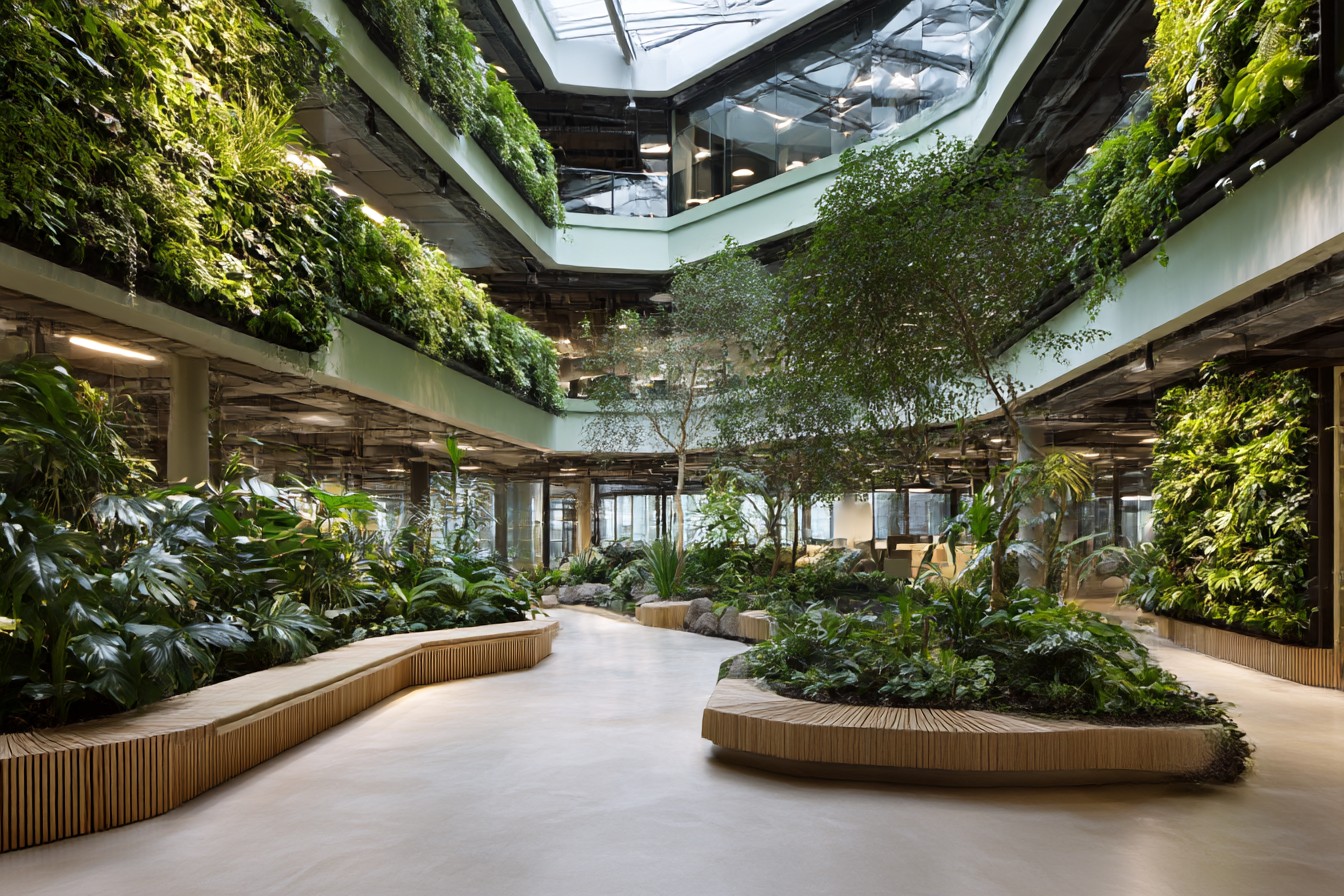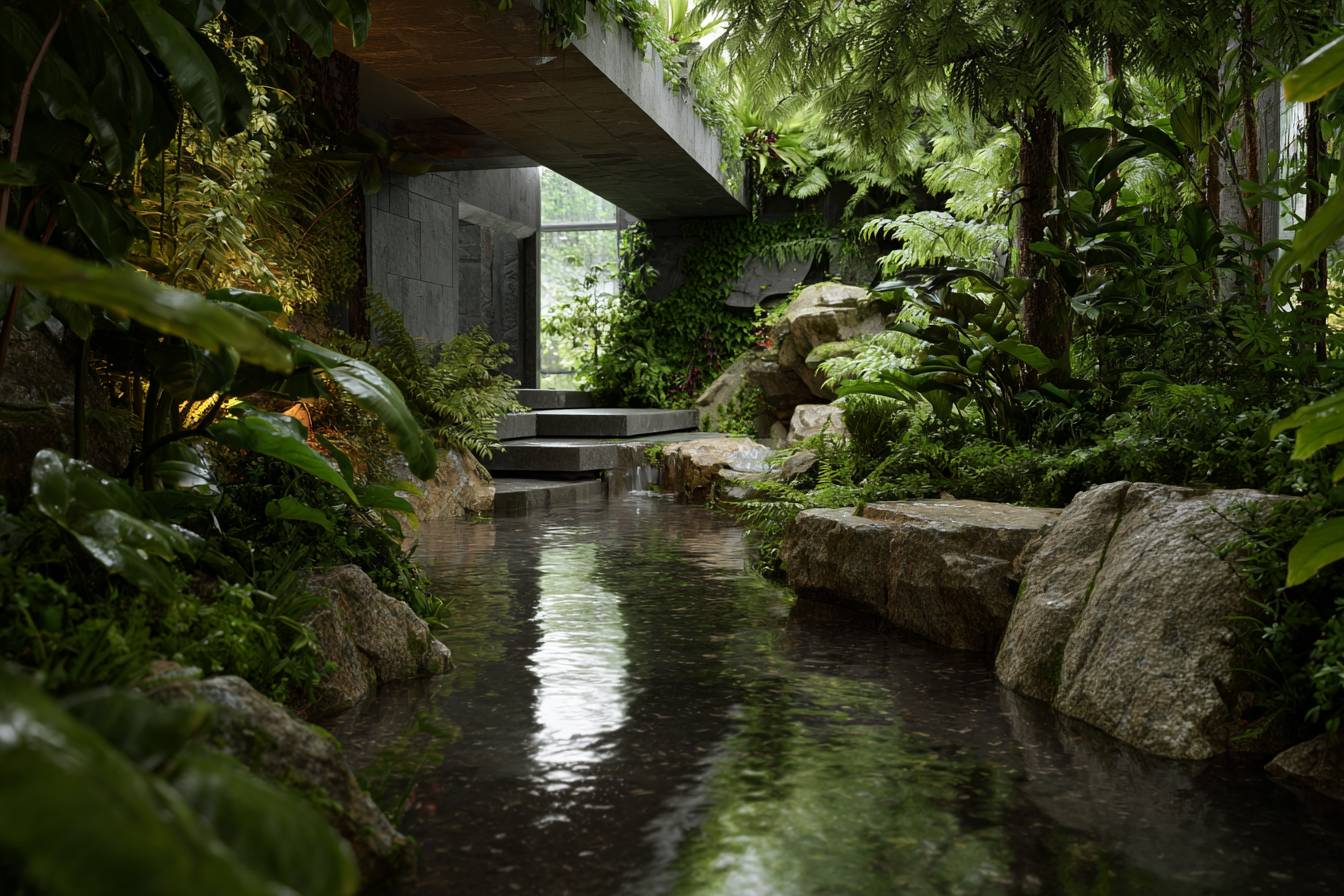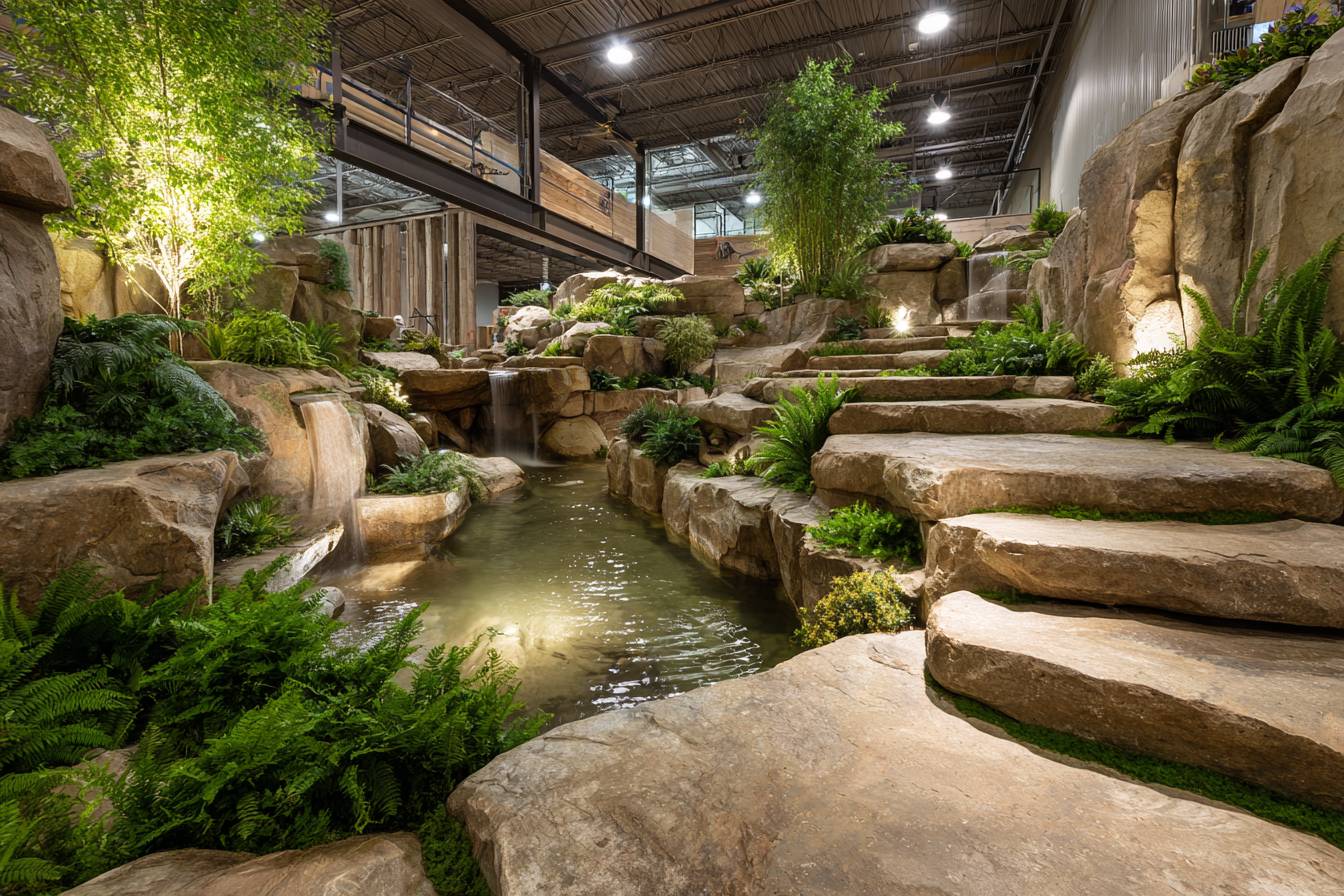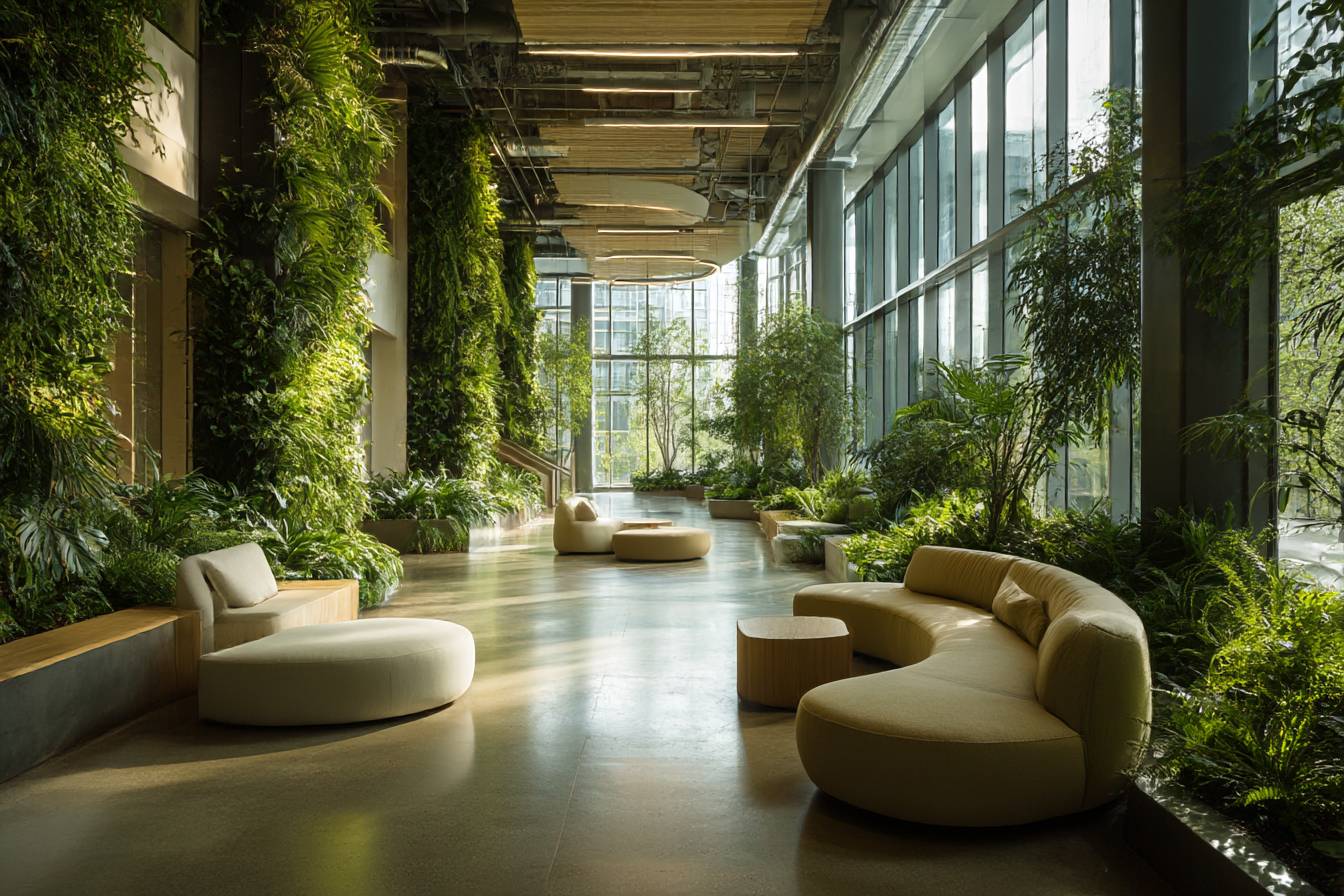# Why Your Living Space Might Be Making You Sick (And How Plants Can Actually Fix It)
I used to think my constant morning stuffiness was just Seattle allergies. You know how it is – you wake up with this scratchy throat and fuzzy head, and you just accept it as part of living in a city with questionable air quality. Then I read this article about how indoor air can actually be way worse than outdoor air, sometimes five times more polluted, and I started paying attention to what was actually happening inside my apartment.
Turns out I was basically marinating in a chemical soup every night. My IKEA dresser was off-gassing formaldehyde, my synthetic carpet was releasing who knows what, and my windowless bedroom had zero air circulation. No wonder I felt like garbage every morning.
This whole realization sent me down a rabbit hole about something called biophilic design and how it can actually improve indoor air quality. I’m not talking about the woo-woo “nature heals everything” stuff – though honestly, sometimes that’s not wrong – but actual, measurable improvements to the air we breathe by bringing natural elements indoors.
The thing that really got me started was this NASA study I stumbled across. Apparently back in the late 80s, they were trying to figure out how to keep air clean in space stations, and they discovered that certain houseplants could remove up to 87% of air toxins in just 24 hours. We’re talking about filtering out formaldehyde, benzene, trichloroethylene – all those lovely chemicals that modern furniture and building materials love to release into our living spaces.
So I started experimenting. My apartment’s not huge, but I strategically placed plants based on what I’d learned. Peace lily in the bathroom because it loves humidity and filters out ammonia from cleaning products. Snake plants in the bedroom because they actually produce oxygen at night instead of consuming it like most plants. Spider plants in the kitchen because they’re basically indestructible and great for filtering out carbon monoxide and formaldehyde from my gas stove.
The change was… honestly pretty dramatic. Within a couple weeks, I stopped waking up feeling like I’d been breathing through a dirty sock. My partner noticed it too – he has mild asthma, and he started using his inhaler way less frequently.
But plants are just the beginning. I started reading about how traditional buildings around the world dealt with air quality before we had mechanical ventilation systems. Persian architecture used these amazing wind towers to create natural air circulation. Japanese houses were designed with cross-ventilation that could move fresh air through the entire building. Mediterranean courtyards created these perfect microclimates that naturally regulated temperature and humidity.
We’ve somehow forgotten all this wisdom in favor of sealed boxes that trap everything inside. My apartment has these old double-hung windows that I never really used properly. Once I figured out how to create actual cross-ventilation – opening windows on opposite sides to create airflow – the stuffiness problem pretty much disappeared. Cost me exactly zero dollars.
Then there’s the whole material thing, which honestly kind of horrified me once I started looking into it. That “new furniture smell” everyone talks about? That’s volatile organic compounds, and your liver has to process all of that. Same with “fresh paint smell” or that chemical scent you get from new carpets. I started doing what I call the smell test – if I can smell it, my body’s dealing with it somehow.
I’ve been slowly replacing things as they wear out with more natural alternatives. Found a used solid wood dresser on Craigslist for $60 instead of buying another particle board piece from a furniture store. When I finally had to replace my ancient rug, I went with a wool one instead of synthetic. Yeah, it cost more upfront, but the difference in how my apartment feels is incredible.
Water features sound fancy, but they’re actually pretty practical for air quality. I got this little desktop fountain at a thrift store for twelve bucks – nothing elaborate, just a simple ceramic piece with a small pump. It adds humidity to my dry apartment (heating in Seattle is brutal), and I swear it makes the air feel cleaner. Plus there’s something weirdly soothing about the sound when I’m working from home.
I came across this documentary about a hospital in Denmark that installed aquariums in their pediatric ward, and kids’ anxiety levels dropped by forty percent just from being able to watch fish while getting treatment. That got me thinking about how water features might be doing more than just adding moisture to the air – they’re probably catching some airborne particles too.
My sister was dealing with constant headaches in her home office, so I shared some of what I’d learned. She moved her desk closer to the window for better natural light and ventilation, added a few plants, and switched out her artificial air fresheners for natural alternatives. Her migraines got way better. Could’ve been coincidence, but she’s convinced it was the changes.
The really interesting stuff happens when you start thinking about all these elements as a system instead of individual fixes. I’ve got my plants positioned near air circulation sources to maximize their filtering effect. The water fountain is in the driest part of my apartment. I use natural cleaning products so I’m not constantly reintroducing chemicals that the plants are trying to filter out.
One thing I learned from reading about green building design is that modern technology doesn’t have to be the enemy of natural approaches. There are these new materials that use photocatalysis – basically they use natural or artificial light to break down pollutants. Some paints now contain minerals that actually neutralize odors instead of just covering them up with fragrances.
I’m not saying everyone needs to throw out their air purifiers and rely entirely on plants. But I’ve realized that a lot of the air quality solutions we default to are treating symptoms instead of addressing root causes. Instead of constantly filtering out pollutants, why not reduce the sources of pollution in the first place?
The accessibility thing is what really excites me about this approach. You don’t need a massive renovation budget or a design degree. Start with a few strategically placed plants – snake plants and pothos are nearly impossible to kill, and they’re great air purifiers. Open windows more often to establish better air circulation. Switch to natural cleaning products when you run out of the chemical ones.
I volunteer at a community garden now, and one of the other volunteers is a teacher who convinced her school to try a classroom plant program. Each room got five plants and basic care instructions. She told me attendance improved and kids seemed more focused. One parent mentioned their kid had fewer respiratory issues during the school year.
That’s the thing about bringing nature indoors – you often get multiple benefits at once. Better air quality comes with psychological benefits, humidity regulation, and yeah, spaces that just look and feel better to be in.
I still live in the same apartment with its limitations. My landlord would probably faint if I suggested major renovations. But the air quality improvements I’ve made with plants, natural materials, and better ventilation have genuinely changed how I feel in my own space. I sleep better, wake up clearer, and don’t reach for antihistamines nearly as often.
The pandemic made everyone suddenly aware of indoor air quality in ways we never were before. People started asking about air filtration and ventilation who’d never thought about it previously. That awareness creates this opportunity to rethink how our indoor spaces work. Instead of just accepting that being indoors means breathing compromised air, we can create spaces that actively support our respiratory health.
I’m still learning and experimenting. Not everything I try works perfectly – I definitely killed more plants than I kept alive in the beginning, and my attempt at a living wall in the bathroom created a mold problem I’m still dealing with. But the basics of using plants, natural materials, and better air circulation to improve indoor air quality? Those work, they’re accessible, and they make a difference you can actually feel.
Jeff writes about bringing bits of nature into everyday living spaces — not as a designer, but as a curious renter who experiments, fails, and keeps trying again. He shares what he’s learned about light, plants, and small changes that make big differences for real people living in ordinary apartments.



